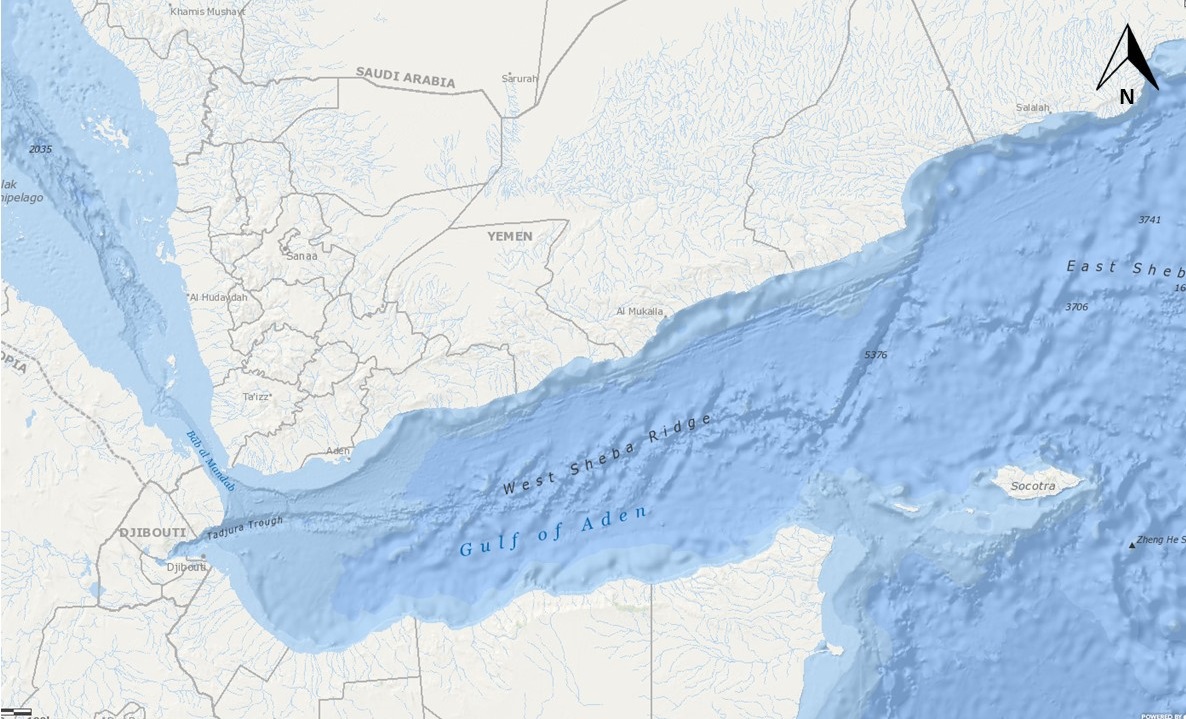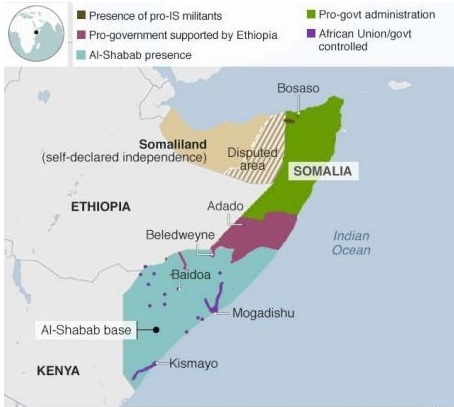Indian Ocean HRA Overview
Continued reported incidents reflect that the HRA remains a threat in regards to piracy activity in the region. Recent efforts to improve the security environment will reduce the impact of Somali piracy, however, continuing deterioration of onshore conditions in Somalia and Yemen such as famine, terrorist groups, weak central government and poor governance of coastal areas continue to influence piracy in the region. Pirate financiers capitalise on the chaos offering opportunities to local people. Piracy groups onshore Somalia still bear the motivation to try and carry out attacks and still with capability to target merchant vessels. Increasingly, vessels in the HRA are subjected to incidents that appear to be co-ordinated small boat piracy approaches however they choose not to ultimately attack. These incidents are then difficult to classify as attempted piracy or simply as regional patterns of life in the area. However, as seen in recent months there have been numerous attacks and attempted boarding’s ranging from incidents in the Somali Basin, Gulf of Aden and the Southern Red Sea. The increased presence of naval patrols and armed security on board vessels act as a deterrent to the threat of piracy, however those vessels transiting in the area without the presence of armed security remain a significant risk.
Reported Incidents HRA
No incidents to report during the reporting period (UKMTO)
Yemen Update
This Week
Reports of vessels detained near Hudaydah port: Last week reports were issued by Saudi media sources stating that more than 19 vessels in the area off al-Mustaqaf were being held by Houthi rebels preventing them from entering Hudaydah port. It was further reported that the rebels were imposing royalties up to $1 million for each vessel to allow docking in the port and that the rebels could possibly decide to blow up the vessels.
However, despite the above reports they have not been verified from any other sources. EUNAVFOR has stated that they have received no reports of any tankers being captured. Further reporting indicates congestion at Hudaydah port due to limited port capacity and increases in permissions granted to enter the port.
UAE deploys troops and armoured vehicles to Socotra Island in the Gulf of Aden: Protests have erupted on the Yemeni island of Socotra after the UAE deployed 100 troops to the island after reports that Emirati forces had expelled Yemeni soldiers assigned to protect the main island’s airport. The UAE maintains a military presence on Socotra Island to train Yemeni soldiers. (Source: Al Jazeera)
Sudan assessing military participation in Yemen: Sudan is assessing its participation in the Saudi-led military operation in Yemen who currently has 3,000 ground troops and several fighter jets in Yemen. Dozens of Sudanese soldiers have been killed on key coastal battlefronts. (Source: Reuters)
Ongoing Threat of Violence/Terrorism at Sea off the Coast of Yemen
- Yemen’s civil war has created an environment mirroring Somalia’s lawlessness. The ongoing conflict in Yemen demonstrates how poor security on land has led to violence spilling out into the maritime domain as Houthi rebels continue to control a large amount of Yemen’s red sea coastline.
- On the 3rd April 2018, Houthi rebels conducted a missile attack near Hudaydah against the Abqaiq, a Saudi tanker. There is no indication that the Houthi rebels intend to attack non-Saudi vessels, however Hudaydah port continues to be used as a launchpad for Houthi rebel attacks and arms smuggling. Attacks of this nature by the Houthi rebels in the maritime and land domain, are often conducted in response to the Saudi coalition actions in the Yemeni conflict.
- Ongoing reporting indicates that coalition forces are continuing to make advances towards Hudaydah which is currently under Houthi rebel control. As the advances towards Hudaydah continue this in turn increases the likelihood of Houthi rebels responding with further attacks against Saudi targets on land and sea, increasing the risk to shipping in the region. In the past Houthi rebels have repeatedly threatened to attack merchant vessels in the region should coalition forces attempt to re-take Hudaydah port.
- The continued proliferation of weapons in Yemen increases the possibility that rebel and other groups may seek to conduct an attack against shipping using WBIED’s.
Somalia Update
This Week
Berbera port deal could shift dynamics across the Horn of Africa: DP World and Somaliland are set to be begin the Berbera port project later this year that could have far reaching implications for the region both economically and politically. The federal government in Mogadishu voted to unanimously ban DP World. However without the ability to enforce the ruling the project is set to go ahead. The development of Berbera port could significantly shift dynamics not just in Somaliland or Somalia, but the Horn of Africa region more broadly. (Source: All Africa)
Tens of thousands of Somalis displaced by deadly flash floods: Somali families displaced by drought and near famine conditions last year are now on the move again as catastrophic flash flooding has forced 175,000 people out of their homes leaving them more vulnerable to malnutrition and disease. Somalia’s two major rivers are affected with the River Shabelle rising at an unprecedented rate of almost four metres in less than a week. The flooding is compounding an already fragile humanitarian situation with an estimated 5.4 million people in need of assistance. (Source: Relief Web)
Al Shabaab continue to be increasingly active in Somalia. The militant group has been battling the Somali Federal Government (SFG) in an effort to govern Somalia. Since 2013, al Shabaab pledged allegiance to al-Qaeda attracting the United States to execute raids and airstrikes against the group. However increased US airstrikes have not enabled African Union Mission (AMISOM) and Somali security forces to gain enough momentum against the terrorist group as al Shabaab has yet to have suffered any great loss of territory or significant casualties from the airstrikes. Al Shabaab continues to maintain strongholds in southern and central Somalia and continue to carry out attacks against military and civilian targets. Somalia is a country whereby tribal loyalties are stronger than national ties which have hindered efforts to strengthen unity. Terrorist groups and clan divisions mean that the SFG and Somali forces lack legitimacy outside of Mogadishu. Further to this, al Shabaab further exemplifies the issue of famine, terrorism and corruption making the prospect of stability in Somalia in the near future bleak. Al Shabaab is likely to maintain its present operational tempo in 2018 which leaves huge challenges facing Mogadishu meaning international efforts to stabilise the country will continue for years to come.
Piracy
In 2017 between March and May, five vessels were hijacked in Somali waters, whilst this was reported by many to be a resurgence of Somali piracy, it can be assessed as more likely to be a result of a permissive environment during the inter-monsoon period allowing skiffs and PAGS to operate with ease. Until the deep rooted issue of piracy in Somalia are resolved, piracy will continue to be a threat. 2017 saw the worst drought Somalia has seen in 40 years, this coupled with the struggling government and extreme militant violence has brought 6.7 million people into crisis. Pirate financiers capitalise on the chaos offering opportunities to local people. Somalia has the second-longest coastline in Africa which is largely unregulated. Pirate groups are known to operate in the coastal regions of Puntland namely Eyl and further south in Galmudug namely Hobyo. It is needless to say, as instability in Somalia continues, it will serve as a permissive environment for piracy operations with an ongoing threat to shipping in the region.


